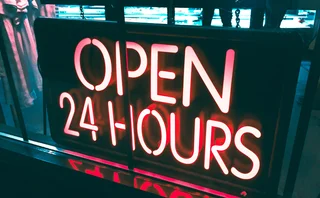Boosting Asia’s Liquidity: A Look at Best Ex Issues in the Region
While best execution mandates are growing around the globe, should the question be more about better execution than best execution?

The second iteration of the Markets in Financial Instruments Directive (Mifid II) is taking aim at best execution. While it will only apply to firms trading in Europe, the directive will have ripple effects around the globe and will likely serve as a driving force for future regulatory mandates.
Best execution is generally about getting trades executed in the most advantageous way for investors, taking into account price, venue and speed, among other things. The execution issues faced in the US and in Europe have been largely centered around the fragmentation of trading venues, coupled with the electronification of more and more asset classes.
But in Asia, the challenges are slightly different, even if fragmentation is still at the heart of the issue. First of all, most Asian marketplaces, with the exception of a few countries, are built around single-exchange markets. This means that if an investor wants a specific stock, for example, they would only be able to get it from one trading venue.
Whereas in the US and Europe, alternative trading systems (ATSs)—dark pools, crossing networks, ECNs and so on—offer additional execution options, ATSs in Asia have not provided as much liquidity as initially intended. Though they do exist in Asia, experts say they aren’t used as frequently and aren’t as efficient as those in the US or Europe. One of the reasons for this could be the move for regulators in Asia-Pacific to be more transparent.
In December, the Hong Kong Securities and Futures Commission (SFC) banned individual investors from trading in dark pools, forcing them to place their trades on the Hong Kong Exchanges and Clearing Limited (HKEX), the only exchange based in the former British colony.
“Electronic trading in Asean is still relatively small as they are tough markets in which to use algos at times; high-touch sales trading and block desks are still highly used in these markets.” Kevin Foy, Maybank Kim Eng Securities
According to HKEX data, dark pools accounted for only 1.3 percent of total market turnover in July 2016.
Similarly, in 2012, the Australian Securities and Investments Commission (ASIC) restricted trading in dark pools unless brokers are able to provide evidence of some sort of benefit in terms of price. This led to liquidity disappearing from dark pools, which now only account for about 2 percent of the market, compared to 8 percent, previously.
Liquidity, Liquidity, Liquidity
One of the major issues plaguing execution quality everywhere is access to liquidity, particularly when executing block trades, and liquidity is becoming more of a problem, says Phillip Weinberg, co-founder and COO of Block Event, which allows institutional and individual investors to transact blocks of equities.
He says the structure of the market in Australia changed following several events, one being the transition of having a single monopoly stock exchange to having multiple exchanges. Also, the ASIC amended its Market Integrity Rules in 2011 to include best execution.
“One of the things we found in the market structure is that the average trade size had dropped dramatically,” he says. “It was almost impossible for large institutions or high net-worths to get the orders they needed done in the market. People were using algorithms to try to disguise their orders and cut them down to size as markets became more electronic. And also the presence of high-frequency traders contributed to lower trade size. So it became impossible to trade blocks.”
Kevin Foy, regional head of sales trading and execution at Maybank Kim Eng Securities (MKE), says that accessing liquidity in the Association of Southeast Asian Nations (Asean), which is MKE’s focus area, is the main issue for best execution, and adds that fragmentation within the Asean region has been minimal compared with more developed Asian, US and European markets.
“Yes, there are multiple dark pool venues in Asean, however, its use is small so far and it is not yet a super-liquid exchange,” he says. “Electronic trading in Asean is still relatively small as they are tough markets in which to use algos at times; high-touch sales trading and block desks are still highly used in these markets.”
There are also emerging market infrastructure issues in certain Asean countries, Foy adds. These issues impact FIX connections, order routing, and general order execution at times on both the cash and direct market access (DMA) desks.
Trading Blocks
Another challenge to the accessing of liquidity is the spread between the bid and offer price, says a head of transaction cost analysis (TCA) at a data vendor. As examples, the executive points to the tick size changes implemented by the Tokyo Stock Exchange in early 2014, as well as on the Topix 100 index stocks. Although the intent was to improve price and allow for shorter time to execution, this change has led to costs increases. The effect of a smaller tick size is that execution sizes have to be reduced. This means that institutions placing large orders would find it more difficult to source for liquidity.
The TCA head adds that fees, such as the 0.1 percent stamp duty imposed on all stock transactions by HKEX, possibly acts as a deterrent for traders. “That means less securities trading all the time, and hence less activity, which also means less high-frequency trading,” says the source. In July, HKEX’s market turnover fell 5.8 percent, month-on-month.
Block Event’s Weinberg says a July 2016 research report by the Australian Centre for International Finance and Regulation is the most accurate and first to quantify execution costs in Australia because it uses ASIC market data, which wasn’t previously available.
“What they found is that the average execution cost in Australia as measured by implementation shortfall, which is the slippage or cost of trading, was 16.4 basis points for institutions trading ASX200 names,” he says. “That translates to around A$715 million ($545 million) per annum of execution costs. They also found that the impact of trading against particular types of high-frequency trading strategies was an additional 10.3 bps or A$437 million ($333 million) per annum of costs. That’s a significant amount of money coming out of pockets of mum and dad investors. Clearly, if you are able to trade in block size you will be saving a good chunk of these costs.”
According to Weinberg, currently 12.5 percent of the Australian market is block-size liquidity.
All Connected
These execution and liquidity issues are only exacerbated as markets become increasingly interconnected, says Robbie McDonnell, head of Asia business for trading technology provider Trading Technologies (TT). “While Asian markets serve the local markets, they are also vital to the ever more connected global trading community. Countries like Australia and Japan, for example, will have 50 to 60 percent of the open interest generated overseas. That liquidity will just as easily flow from Asia, Europe or the US, and usually a combination of all three. The newly established datacenters are first rate and on par with the best in the world,” he says.
Markets in Japan, Hong Kong, Australia and Singapore have invested heavily in state-of-the-art datacenters and new technology through different forms of consolidation or collaboration. “Of course it would be remiss not to mention China and India when it comes to future growth and how they will open up over time, but inevitably, transparency, speed and ease of access will be key,” he says.
Network Costs and Best Ex
While some have been quick to say network costs aren’t really an issue for best execution, others argue that the logistics of trading in Asia make it an expensive proposition.
Ian Salmon, market consultant at Accedian, says the entire end-user experience depends on the underlying performance of the network. “The fragmented nature of the Asian market and the long distances between hubs is unavoidable and exposes fixed costs when it comes to connectivity,” he says.
While the key for best execution is liquidity, and intelligence in interacting with the liquidity, it is the ability to connect to that pool that is essential. But there’s hope that some of these fragmentation barriers will be improved, TT’s McDonnell adds. “Asian markets definitely have some challenges in this area given the sheer size of the area to be covered,” he says. “However, as the costs of lines and hardware continue to fall, these savings will help open the markets and lower the barriers of entry. These costs are set to go in one direction, and that is a good thing.”
TT CTO Drew Shields says there is more to execution services than just best execution. “A seamless flow of data back and forth between front and back offices is critical, including clarity on positions and risk management despite the many ways customers may be accessing the market,” he says. As a result, TT has focused its new trading platform on allowing users to aggregate order flow across all execution systems via FIX while providing a “forever audit trail” even for customers who do not use the TT screen to trade.
Regulatory Woes
Apart from the slew of other reporting requirements firms trading with European parties will have to conduct under Mifid II, the rules also set out business conduct standards for market participants executing transactions.
The updated directive—which has been postponed until January 3, 2018, in order to allow firms to get better prepared—states that market participants have to develop a methodology to track and provide evidence of best execution at the request of clients and/or regulators. That said, some still question whether this particular piece of the rule will be implemented, or whether there will be adjustments to the rule or even the timing of adoption.
In a regulatory brief published by PwC earlier this year, the accounting and consulting firm said though Mifid II’s best execution rules are broad, this would require firms from both the buy and sell side to document, monitor and demonstrate best execution based on quantitative and qualitative metrics. This would include price, cost, speed, size and the likelihood for execution and settlement. Firms would also have to annually calculate and report the top execution venues based on volume and number of orders for each asset class.
Andrew Gibbins, director of product and marketing strategy for Europe and Asia-Pacific at TT, adds that executions conducted for institutional or retail firms by an intermediary investment firm will be subject to a “total consideration’ cost disclosure, “which implies demonstrably larger data capture and processing capabilities,” he says.
Under Mifid II rules, firms have to unbundle the cost of research from the cost of executing trades. It cannot be the case anymore where a fund manager uses a particular broker just to use research from that broker, despite being able to achieve a better execution outcome trading with another broker or venue.
Around Asia-Pacific
In Singapore, best-execution principles are generally expressed in the Securities and Futures (Licensing and Conduct of Business) Regulations, where brokers need to observe high standards of integrity, market conduct and fair dealing. A spokesperson from the Monetary Authority of Singapore says brokers need to ensure fair execution of clients’ orders and that clients’ interests are placed first. They are also required to implement effective controls and segregation of duties to mitigate potential conflicts of interest that may arise from their operations.
“For instance, a broker cannot withdraw or withhold from a market any order or any part of a client’s order for the benefit of the broker itself or any other person. Brokers are also prohibited from divulging information relating to a client’s order held by the broker,” the spokesperson says.
While Malaysian regulators do not have specific guidelines for best execution practices, they do have strict guidelines that aim to protect investors when it comes to execution, and changes might be on the way, as well, MKE’s Foy says. “Bursa Malaysia and the regulator, Bank Negara, strive to stay at the forefront of global changes in order to keep attracting foreign investors, so we would not be surprised if they do introduce some regulations on best execution in the future,” he notes.
Daniel Lee, senior vice president, group institutional business for DBS Vickers Securities, says Mifid II may result in regulators within the region adopting similar proposals in the future and perhaps making transaction cost analysis and statistical tools to show best execution a requirement.
“The question buy-side and sell-side firms impacted by Mifid II need to be asking is whether their systems are up to speed to handle this potential global change in execution requirements,” says Lee.
It remains to be seen how the Asian market handles best execution moving forward with more demands coming from regulators. In the meantime, the search for liquidity beckons.
Salient Points
- Most Asian countries are single-exchange markets with a few exceptions like Japan and Australia.
- Some regulators in Asia have made it difficult to trade in dark pools, which has hindered liquidity, according to sources.
- Regulations around best execution have mainly been skewed to the sell side, but some argue that the onus lies on the buy side, instead.
- Although Mifid II only impacts firms trading with Europe, it could lead to a standardization in other regulators’ adoption of best-execution requirements.
Only users who have a paid subscription or are part of a corporate subscription are able to print or copy content.
To access these options, along with all other subscription benefits, please contact info@waterstechnology.com or view our subscription options here: http://subscriptions.waterstechnology.com/subscribe
You are currently unable to print this content. Please contact info@waterstechnology.com to find out more.
You are currently unable to copy this content. Please contact info@waterstechnology.com to find out more.
Copyright Infopro Digital Limited. All rights reserved.
You may share this content using our article tools. Printing this content is for the sole use of the Authorised User (named subscriber), as outlined in our terms and conditions - https://www.infopro-insight.com/terms-conditions/insight-subscriptions/
If you would like to purchase additional rights please email info@waterstechnology.com
Copyright Infopro Digital Limited. All rights reserved.
You may share this content using our article tools. Copying this content is for the sole use of the Authorised User (named subscriber), as outlined in our terms and conditions - https://www.infopro-insight.com/terms-conditions/insight-subscriptions/
If you would like to purchase additional rights please email info@waterstechnology.com
More on Regulation
DSB says industry is ready to meet UPI mandate ahead of deadline
The Unique Product Identifier will be required for certain OTC derivatives in the EU at the end of April, following US adoption in January.
‘Very careful thought’: T+1 will introduce costs, complexities for ETF traders
When the US moves to T+1 at the end of May 2024, firms trading ETFs will need to automate their workflows as much as possible to avoid "settlement misalignment" and additional costs.
Court case probes open-source licenses as movement stands at crossroads
The Software Freedom Conservancy’s lawsuit against TV-maker Vizio begins trial in California, raising questions about open-source licenses and the risks posed by adhering to them.
Waters Wavelength Podcast: Countdown to T+1
DTCC’s Val Wotton joins the podcast this week to discuss the impending move to T+1 in the US.
Consolidated tape hopefuls gear up for uncertain tender process
The bond tapes in the UK and EU are on track to be authorized in 2025. Prospective bidders for the role of provider must choose where to focus their efforts in anticipation of more regulatory clarity on the tender process.
Fighting FAIRR: Inside the bill aiming to keep AI and algos honest
The Financial Artificial Intelligence Risk Reduction Act seeks to fix a market abuse loophole by declaring that AI algorithms do not have brains.
Waters Wrap: The rise of AI washing… and regulation washing?
The SEC recently levied fines against two investment advisors over “AI washing”. Anthony takes issue with the announcement.
Prepare now for the inevitable: T+1 isn’t just a US challenge
The DTCC’s Val Wotton believes that firms around the globe should view North America’s move to T+1 as an opportunity—because it’s inevitable.
Most read
- Sell-Side Technology Awards 2024: All the winners
- Sell-Side Technology Awards 2024: Best sell-side front-office platform—Bloomberg
- Systematic tools gain favor in fixed income








